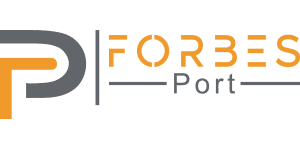What Material is Used for the Belt Scraper?

The importance of belt scrapers in conveyor systems
Conveyor systems play a vital role in numerous industries, ensuring the smooth and efficient movement of materials. However, they can also be prone to accumulating dust, debris, and other unwanted particles, potentially leading to system breakdowns and costly downtime.
That’s where belt scrapers come in. These simple yet essential components are designed to remove unwanted material from the surface of conveyor belts before it has a chance to accumulate and disrupt operations.
One of the key benefits of using belt scrapers is improved overall system performance. By removing excess material from conveyors, belt scrapers help maintain optimal functioning by preventing accumulation that can lead to clogs or jams. This results in reduced maintenance costs and increased productivity as the risk of unexpected breakdowns decreases significantly.
Moreover, using quality Suconvey High abrasion resistance conveyor belt scrapers can also enhance safety within conveyor systems. Dust and debris accumulation on conveyor belts not only affects their efficiency but can also pose serious health risks for workers by causing respiratory problems or accidents due to slippery surfaces. Properly designed belt scrapers minimize these hazards by effectively reducing material buildup on belts.
In conclusion, investing in high-quality belt scrapers is crucial for any business that relies on conveyor systems for its operations. The benefits are far-reaching – from increased system performance and reduced maintenance costs to enhanced worker safety. So next time you’re evaluating your conveyor setup or troubleshooting performance issues, don’t overlook the importance of having reliable belt scrapers installed — they just might be the unsung heroes your operation needs for smoother sailing ahead!
Polyurethane: a durable and versatile choice
Polyurethane is a material that has gained popularity in various industries due to its durability and versatility. When it comes to belt scrapers, polyurethane proves to be an excellent choice for its ability to withstand harsh conditions and offer long-lasting performance. Unlike traditional materials like rubber or steel, polyurethane has enhanced resistance against abrasion, chemicals, and heat, making it ideal for heavy-duty applications.
One of the key advantages of using polyurethane as a belt scraper material is its flexibility. Polyurethane can be molded into various shapes and sizes, allowing for customized designs that fit specific conveyor systems.
This flexibility also contributes to improved scraping efficiency as the scraper can maneuver around pulleys and rollers with ease. Moreover, the high elasticity of polyurethane enables it to maintain optimal contact with the belt surface, effectively removing debris and extending the belt’s lifespan.
In addition to its durability and flexibility properties, polyurethane offers a cost-effective solution compared to other materials. While it may have a slightly higher upfront cost than rubber scrapers, its prolonged lifespan makes it a more economical choice in the long run.
The reduced need for frequent replacement translates into both time and cost savings for industries relying on conveyor systems. Furthermore, polyurethane is lightweight which helps save energy during operation by reducing friction between the scraper and the belt.
In conclusion, when considering options for belt scrapers that provide durability and versatility, choosing polyurethane is an intelligent decision. And, High abrasion resistance Polyurethane conveyor belt rubber skirting is also worth considering.
In conclusion, choosing the right material for efficient belt scraping is crucial in maintaining conveyor belt performance and preventing potential damage. While polyurethane is widely regarded as a popular choice due to its exceptional wear resistance and versatility, it may not always be the best option.
An alternative material to consider is tungsten carbide, which offers superior durability and hardness compared to other materials. Tungsten carbide scrapers are ideal for heavy-duty applications where belts transport abrasive or tough materials. They provide excellent cleaning efficiency while withstanding extreme wear conditions.
Another important factor to consider when selecting a scraper material is its ability to prevent belt damage. Materials like rubber or soft polyurethane may cause wear on the conveyor belt surface if they contain hard particles or sharp edges. In contrast, scraper materials made of high-density low-porosity polyethylene (HDPE) can minimize friction and avoid belt damage due to their smooth surface texture.
In conclusion, careful consideration of factors such as application requirements, expected wear conditions, and potential impact on belt health should be taken into account when choosing the right material for efficient belt scraping.
The selection process should go beyond conventional options like polyurethane and explore alternatives such as tungsten carbide or HDPE that offer enhanced durability.




